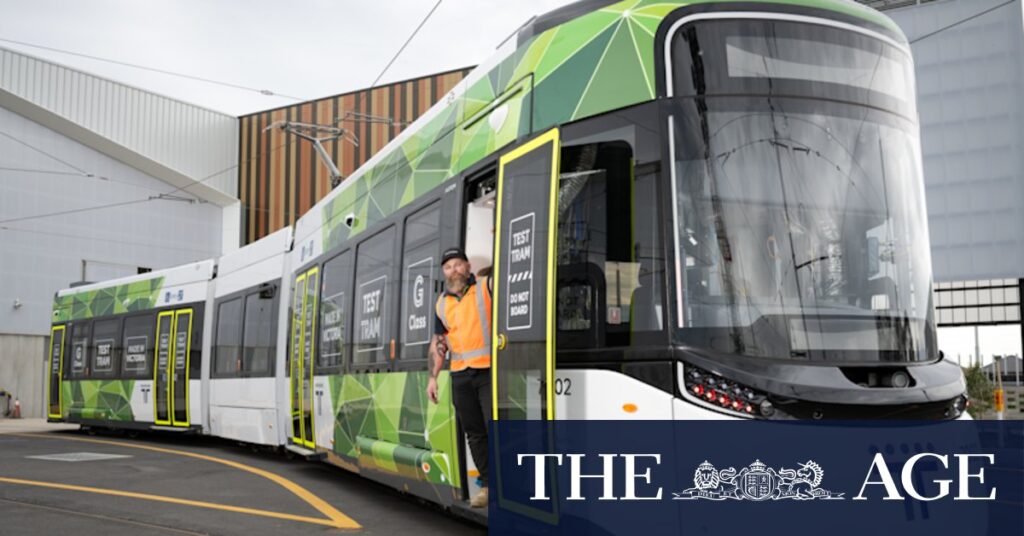
The first new tram to operate in Melbourne for over a decade is set to roll through the city’s inner-west later this year as part of an extensive testing program currently underway. The G-class tram, a cutting-edge model, will gradually replace the aging high-floor Z- and A-class trams on routes 57 (from West Maribyrnong), 59 (Airport West), and 82 (Footscray to Moonee Ponds).
Victoria has committed a substantial $1.85 billion to the construction of 100 G-class trams over the next four years. The first of these is expected to enter service by mid-2026, promising enhanced accessibility and comfort for passengers. Two units have already been completed at the Alstom factory in Dandenong, with one recently delivered to a new purpose-built depot in Maidstone, which Transport Minister Gabrielle Williams is set to officially open on Friday.
Testing and Technological Advancements
Ben Phyland, head of rolling stock and ticketing at the Department of Transport and Planning, revealed that a rigorous testing program is now underway at the depot facilities. These include an automated “tram scanner” that inspects arriving trams for damage or maintenance issues—a first for Victoria.
By the end of the year, the G-class will venture out of the depot to begin testing on sections of routes 57, 59, and 82. “That will consist of loading up the vehicle to effectively simulate a crush load tram and ensuring it can brake in the shortest distance possible, and that it can accelerate properly,” Phyland explained. “We’re testing all the different functionalities of the tram, both electrically and mechanically.”
“What happens if the power drops out, what happens if it fails? We’re testing all the different functionality of the tram, both electrically and mechanically.” — Ben Phyland
Design and Accessibility Features
The G-class is based on an Alstom model already in service in several other cities but has been modified to withstand Melbourne’s extensive and challenging tram network, the largest in the world. The new tram will eventually be tested along all 250 kilometers of the Melbourne tram network to ensure it meets the rigorous demands.
Passengers are expected to experience less crowding during peak hours. The G-class trams, at 25 meters long, are approximately 10 meters longer than the Z and A classes, accommodating more than twice the number of passengers—150 in total, with 48 seated. The low-floor design ensures accessibility for commuters with disabilities, the elderly, and those with prams.
“We’ve had a lot of stakeholder input to the design to try and make it as accessible as possible.” — Ben Phyland
Historical Context and Future Implications
The last tram model introduced to Victoria was the E-class in 2013. The G-class is designed to be shorter, making it suitable for the tighter routes where it will be deployed and compatible with existing tram stops. Alstom technician Elliot Rushworth, the first to obtain a license for the G-class, will oversee the controls during testing and commissioning at Maidstone.
Rushworth noted that even compared to the E-class, the new model feels roomier, with more space in the aisle between seats and a shorter grab rail that opens up the central standing area. “The disability access area, I think the punters are going to love that. There’s just a lot more room to move,” he remarked.
Around 43 percent of Yarra Tram services are now operated with accessible low-floor trams, while only 29 percent of stops are accessible.
This development follows a broader trend in public transport towards increased accessibility and passenger comfort. As the G-class trams begin to replace older models, they represent a significant step forward in the evolution of Melbourne’s public transport infrastructure.
With the first trams expected to enter service by mid-2026, residents can look forward to a more accessible and comfortable commuting experience. The transition to G-class trams marks a pivotal moment in the modernization of Melbourne’s iconic tram network.






